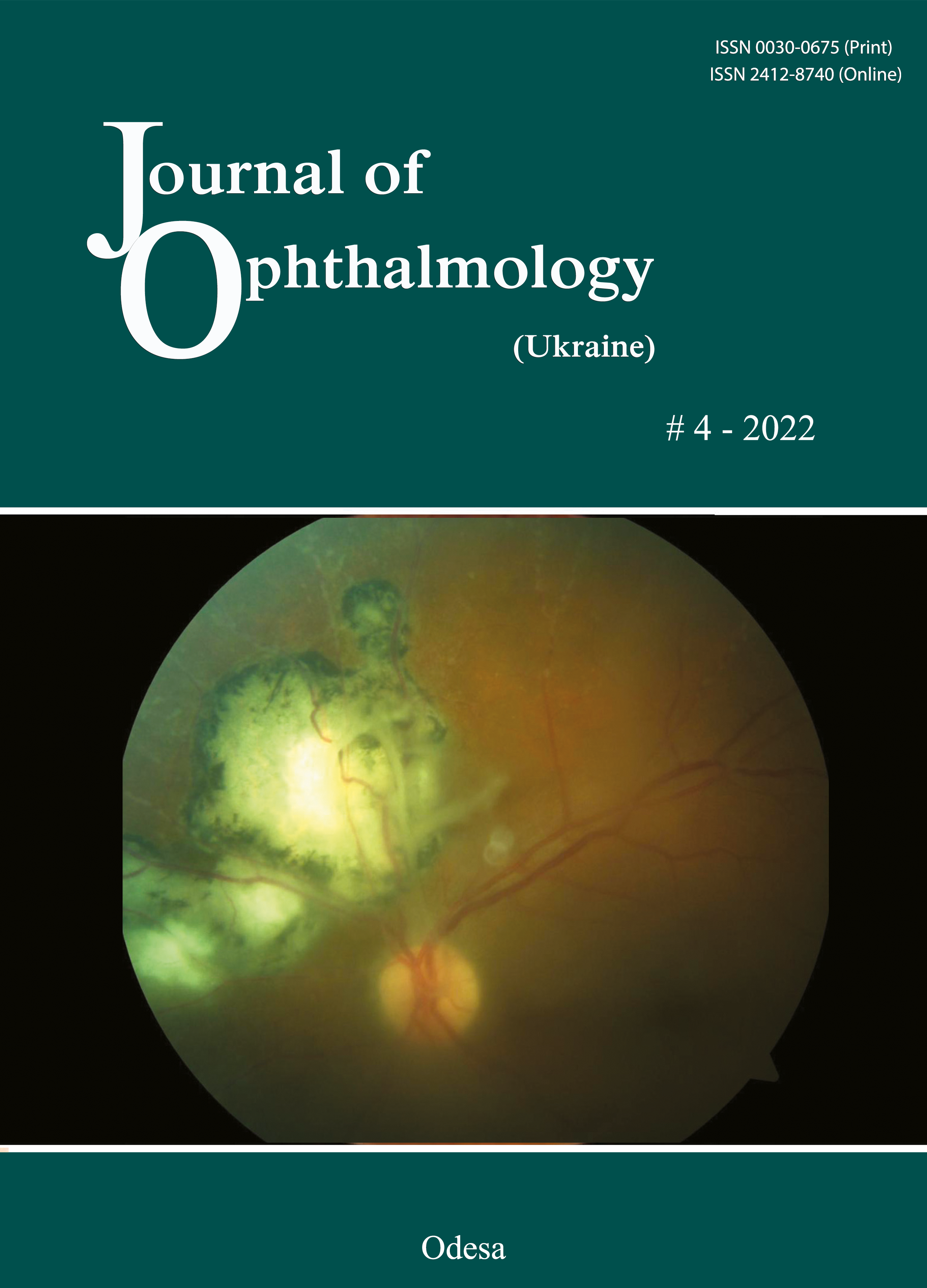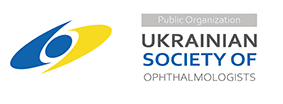Ocular motor manifestations of neurodegenerative diseases: case reports
DOI:
https://doi.org/10.31288/oftalmolzh202245861Keywords:
ocular motor manifestations, nystagmus, neurodegenerative diseases, diplopiaAbstract
Background: Ocular motor manifestations (nystagmus and diplopia) do not lead to blindness. However, loss of cognitive abilities in the presence of these manifestations can lead to irreparable social consequences. Therefore, improved diagnostic assessment of ocular motor abnormalities will enable early detection of neurodegenerative diseases, whereas the correction of these abnormalities will prevent the undesirable consequences.
Purpose: To analyze the nature of ocular motor manifestations of neurodegenerative disorders.
Material and Methods: Two cases are presented: a case of a partial Parinaud's syndrome, and a case of viral encephalomyelitis.
Results: In a case of a partial Parinaud's syndrome, an examination found ocular motor manifestations in the form of incongruous diplopia, nystagmus at near and pupillary light-near dissociation. This allowed suspecting pons lesions, which was confirmed by MRI evidence of multiple small degenerations at the dorsal-medial pons, the location specific for a Parinaud's syndrome. In case 2, the patient was diagnosed with viral encephalomyelitis and substantial bilateral vertical rotational nystagmus, more pronounced in abduction, indicating damage to the brainstem.
Conclusion: The pattern and nature of ocular motor abnormalities are helpful in localizing lesions of such deep brain structures as the brainstem and pons. A more thorough study will be beneficial for early diagnostic assessment and timely treatment of neurodegenerative lesions, and, consequently, for preventing undesirable social consequences.
References
1.Erkkinen MG, Kim MO, Geschwind MD. Clinical neurology and epidemiology of the major neurodegenerative diseases. Cold Spring Harb Perspect Biol. 2018 Apr 2;10(4):a033118. https://doi.org/10.1101/cshperspect.a033118
2.Guidoboni G, Sacco R, Szopos M, et al. Neurodegenerative Disorders of the Eye and of the Brain: A Perspective of Their Fluid-Dynamical Connections and the Potential of Mechanism-Driven Modeling. Front Neurosci. 2020 Nov 12;14:566428. https://doi.org/10.3389/fnins.2020.566428
3.Anderson T, Mac Askill M. Eye movements in patients with neurodegenerative disorders. Nat Rev Neurol. 2013 Feb;9(2):74-85. https://doi.org/10.1038/nrneurol.2012.273
4.Terao Y, Fukuda H, Ugawa Y, Hikosaka O. New perspectives of the pathophysiology of Parkinson's disease as assessed by saccade performance: A clinical review. Clin Neurophysiol. 2013 Aug;124(8):1491-506. https://doi.org/10.1016/j.clinph.2013.01.021
5.Terao Y, Fukuda H, Yugeta A, et al. Initiation and inhibitors control of saccades with the progression of Parkinson's disease: Changes in three major drives converging on the superior colliculus. Neuropsychologia. 2011;49(7):1794-1806. https://doi.org/10.1016/j.neuropsychologia.2011.03.002
6.Antoniades CA, Demeyere N, Kennard C, et al. Antisaccades and executive dysfunction in early drug-naive Parkinson's disease: the discovery study. Mov Disord. 2015 May;30(6):843-7. https://doi.org/10.1002/mds.26134
7.Coe BC, Munoz DP. Mechanisms of saccade suppression revealed in the anti-saccade task. Philos Trans R SocLond B Biol Sci. 2017 Apr 19;372(1718):20160192. https://doi.org/10.1098/rstb.2016.0192
8.Kunimatsu J, Tanaka M. Roles of the primate motor thalamus in the generation of antisaccades. J Neurosci. 2010 Apr;30(14):5108-17. https://doi.org/10.1523/JNEUROSCI.0406-10.2010
9.Nij Bijvank JA, LJ Van, LJ Balk, et al. Diagnosis and quantifying a common deficit in multiple sclerosis: internuclear ophthalmoplegia. Neurology. 2019 May 14;92(20):e2299-e2308. https://doi.org/10.1212/WNL.0000000000007499
10.Nij Bijvank JA, EM Strijbis, Nauta IM, et al. Impaired saccadic eye movements in multiple sclerosis are related to altered functional connectivity of the oculomotor brain network. Neuroimage Clin. 2021;32:102848. https://doi.org/10.1016/j.nicl.2021.102848
11.Goldenberg-Cohen N, Haber J, Ron Y, et al. Long term ophthalmological follow up of children with Parinaud syndrome. Ophthalmic Surg Lasers Imaging. Jul-Aug 2010;41(4):467-71. https://doi.org/10.3928/15428877-20100426-02
12.Feroze KB, Patel BC. Parinaud Syndrome. Treasure Island (FL): StatPearls Publishing; 2019 Jan.
Downloads
Published
How to Cite
Issue
Section
License
Copyright (c) 2025 Н. М. Мойсеєнко

This work is licensed under a Creative Commons Attribution 4.0 International License.
This work is licensed under a Creative Commons Attribution 4.0 International (CC BY 4.0) that allows users to read, download, copy, distribute, print, search, or link to the full texts of the articles, or use them for any other lawful purpose, without asking prior permission from the publisher or the author as long as they cite the source.
COPYRIGHT NOTICE
Authors who publish in this journal agree to the following terms:
- Authors hold copyright immediately after publication of their works and retain publishing rights without any restrictions.
- The copyright commencement date complies the publication date of the issue, where the article is included in.
DEPOSIT POLICY
- Authors are permitted and encouraged to post their work online (e.g., in institutional repositories or on their website) during the editorial process, as it can lead to productive exchanges, as well as earlier and greater citation of published work.
- Authors are able to enter into separate, additional contractual arrangements for the non-exclusive distribution of the journal's published version of the work with an acknowledgement of its initial publication in this journal.
- Post-print (post-refereeing manuscript version) and publisher's PDF-version self-archiving is allowed.
- Archiving the pre-print (pre-refereeing manuscript version) not allowed.












